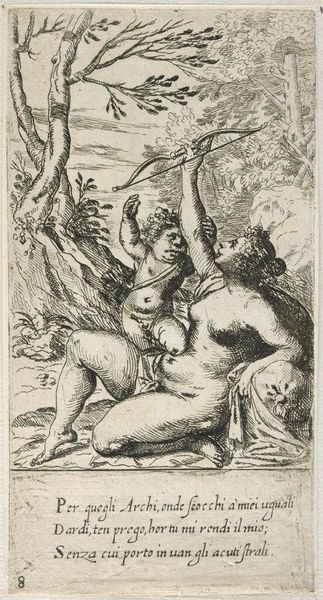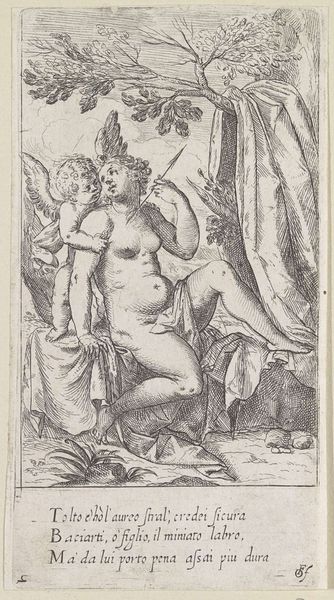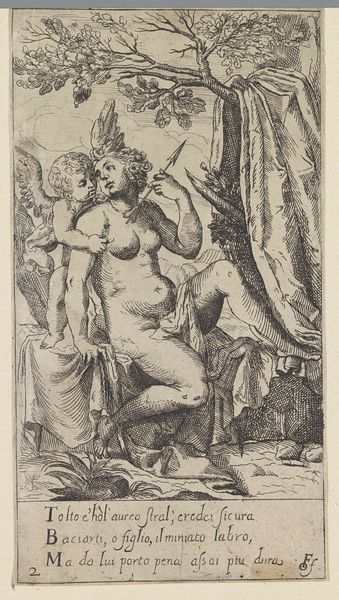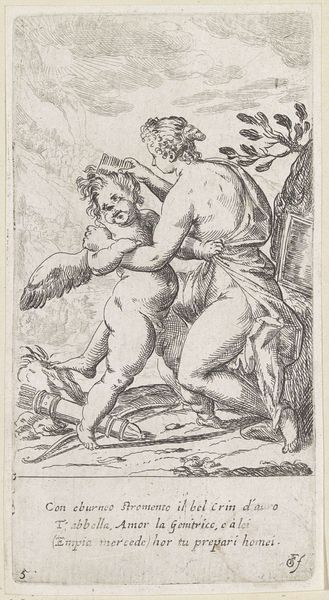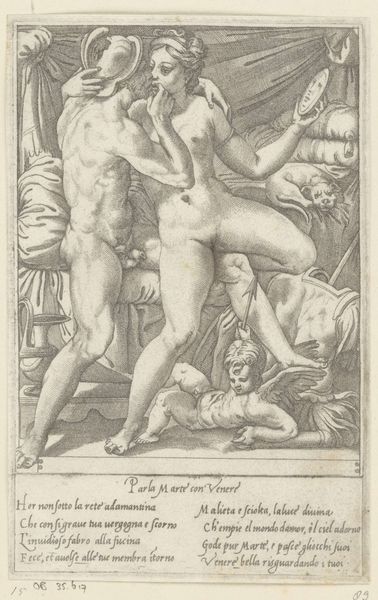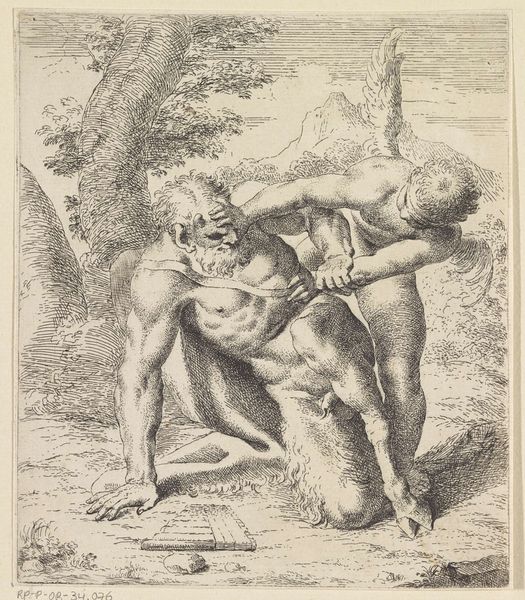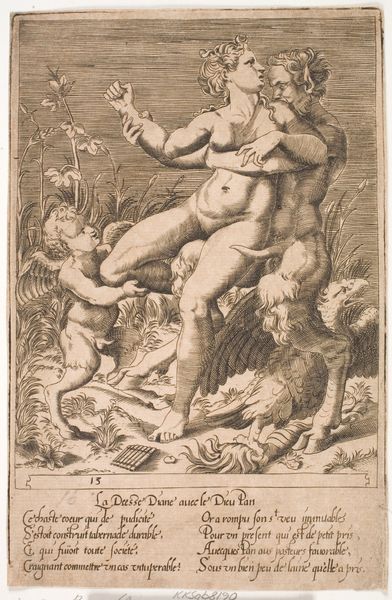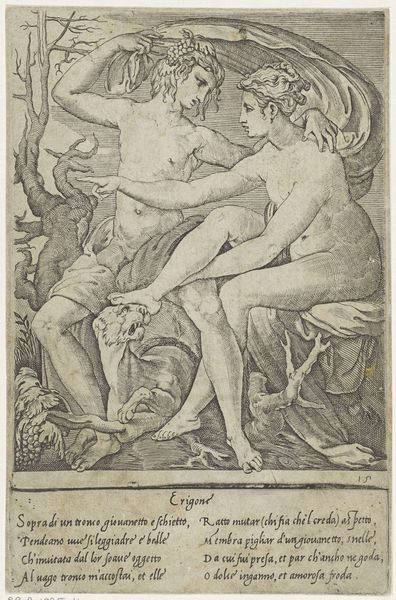
etching, engraving
#
allegory
#
baroque
#
pen drawing
#
etching
#
figuration
#
history-painting
#
nude
#
engraving
Dimensions: height 164 mm, width 86 mm
Copyright: Rijks Museum: Open Domain
Curator: Here we have "Amor vraagt aan Venus de boog," which translates to "Cupid Asks Venus for the Bow," a print made after 1617. Its anonymous creator used engraving and etching techniques to depict this classic mythological scene, now housed at the Rijksmuseum. Editor: It strikes me as quite theatrical. There’s something about the exaggerated musculature of Venus and the precarious way Cupid clutches her arm, reaching for that bow. The tonal range is fascinating for its scale, creating depth with mere lines. Curator: Indeed, the print employs baroque dynamism. Look at how Cupid's upward reach is countered by Venus's languid pose. This era relished depicting powerful emotions and dramatic narratives, and this work, printed on paper, allowed wider access to mythological themes that once adorned palace walls. Note the artist’s signature in the corner; printmaking played a significant role in art distribution. Editor: You're right. The way light and shadow define their forms, particularly Venus's back, is achieved with remarkable efficiency. Those cross-hatching techniques almost sculpt her out of the page. I see how the baroque sensibility is present within its form; everything is in dynamic motion. Curator: Beyond the artistry, consider what this scene signifies. Cupid, the god of love, is requesting his bow back from his mother, Venus. What does it mean when love itself needs re-arming? The politics of imagery become particularly evident here – this isn’t just aesthetics, but a statement on power dynamics between individuals. And this can be amplified with the circulation granted by its creation as an etching. Editor: But even on its own, you have to acknowledge how compelling the contrast in scale makes the piece. Tiny Cupid, yet he dominates the scene with his demanding gesture! Curator: I agree. This is a small object with large resonance. Editor: A powerful depiction rendered with incredible control of line and tone. Curator: A great reminder of the important and diverse role of this medium across centuries and cultures.
Comments
No comments
Be the first to comment and join the conversation on the ultimate creative platform.
